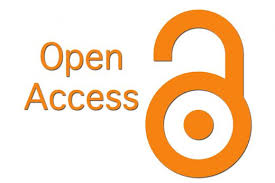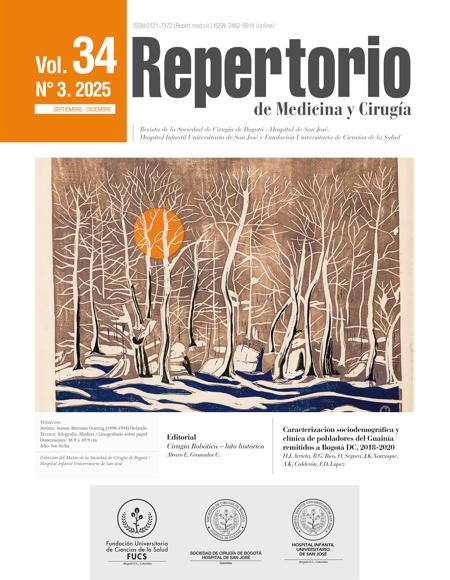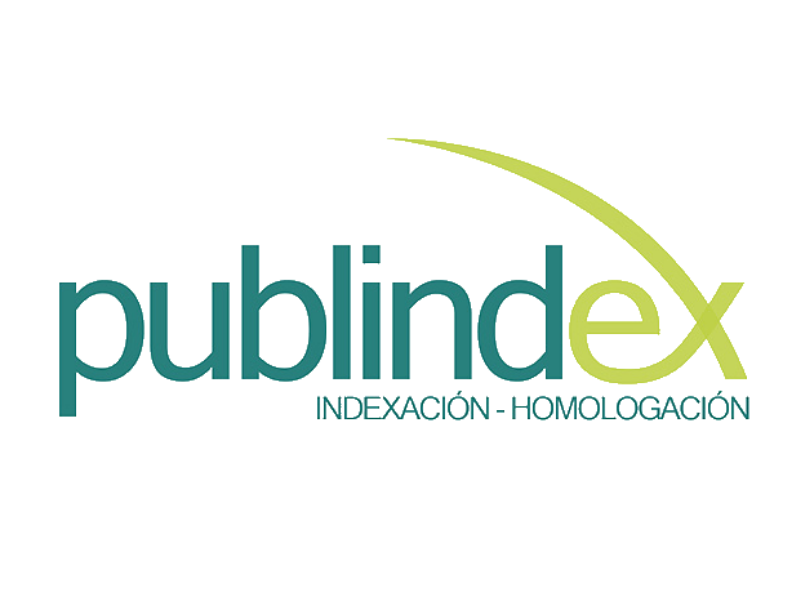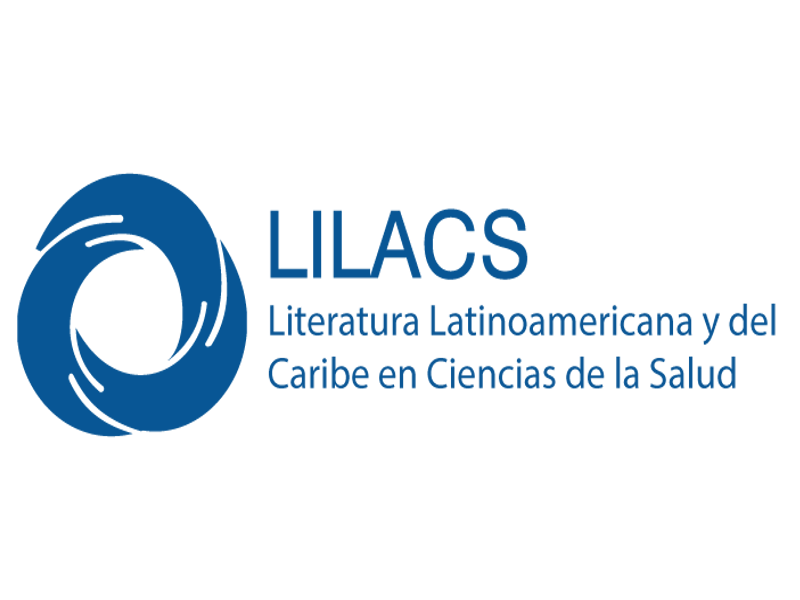Therapeutic hypothermia as a treatment strategy for neonates with hypoxic-ischemic encephalopathy
Hipotermia terapéutica como estrategia de tratamiento en neonatos con encefalopatía hipóxico-isquémica
![]()
![]()

Show authors biography
Introduction: hypoxic-ischemic encephalopathy (HIE) affects neurological function in newborns, leading to brain injury. The most widely supported therapy is therapeutic hypothermia, initiated in the first six hours after childbirth to reduce brain damage. Objective: to conduct an update on the efficacy and safety of therapeutic hypothermia as treatment for HIE in neonates. Material and methods: a systematic review of updated publications using the PRISMA guide. Ten databases were selected including a total of 1.962 articles based on key terms. Inclusion and exclusion criteria were applied for filtering articles; four relevant studies featuring adequate quality were identified based on the Joanna Briggs Institute (JBI) Critical Appraisal Checklist questionnaires. Results and discussion: results indicate that therapeutic hypothermia by different methods has shown its benefits in reducing brain injury in neonates. However, complications and adverse events, such as disseminated intravascular coagulation, bradyarrhythmia and thrombocytopenia, were observed. which indicates the need for careful monitoring. Conclusions: therapeutic hypothermia has been identified as a valuable treatment. It is essential to consider different method choices, side effects and the need for early intervention to improve outcomes in neonates with hypoxic-ischemic encephalopathy.
Article visits 428 | PDF visits 142
Downloads
- Suppiej A, Vedovelli L, Boschiero D, Bolzon M, Cainelli E. Abnormal heart rate variability at school age in survivors of neonatal hypoxic-ischemic encephalopathy managed with therapeutic hypothermia. Eur J Paediatr Neurol. 2020;29:66-70. https://doi.org/10.1016/j.ejpn.2020.08.004
- Lemyre B, Chau V. Hypothermia for newborns with hypoxic-ischemic encephalopathy. Paediatr Child Health. 2018;23(4):285–91. https://doi.org/10.1093/pch/pxy028
- Romeo DM, Bompard S, Serrao F, Leo G, Cicala G, Velli C, et al. Early neurological assessment in infants with hypoxic ischemic encephalopathy treated with therapeutic hypothermia. J Clin Med. 2019;8(8):1247. https://doi.org/10.3390/jcm8081247
- Packer CH, Hersh AR, Sargent JA, Caughey AB. Therapeutic hypothermia in severe hypoxic-ischemic encephalopathy: a cost-effectiveness analysis. J Matern Fetal Neonatal Med. 2022;35(5):890–7. https://doi.org/10.1080/14767058.2020.1733519
- Battersby C, Longford N, Patel M, Selby E, Ojha S, Dorling J, et al. Study protocol: Optimising newborn nutrition during and after neonatal therapeutic hypothermia in the United Kingdom: Observational study of routinely collected data using propensity matching. BMJ Open. 2018;8(10):e026739. https://doi.org/10.1136/bmjopen-2018-026739
- Bhandary P, Daniel JM, Skinner SC, Bacon MK, Hanna M, Bauer JA, et al. Case series of therapeutic hypothermia for neonatal hypoxic-ischemic encephalopathy during extracorporeal life support. Perfusion (United Kingdom). 2020;35(7):700–6. https://doi.org/10.1177/0267659119899521
- Gilmore MM, Tekes A, Perin J, Parkinson C, Spahic H, Chavez-Valdez R, et al. Later cooling within 6 h and temperatures outside 33–34 °C are not associated with dysfunctional autoregulation during hypothermia for neonatal encephalopathy. Pediatr Res. 2021;89(1):223–30. https://doi.org/10.1038/s41390-020-0876-8
- Jia W, Lei X, Dong W, Li Q. Benefits of starting hypothermia treatment within 6h vs. 6-12h in newborns with moderate neonatal hypoxic-ischemic encephalopathy. BMC Pediatr. 2018;18(1):50. https://doi.org/10.1186/s12887-018-1013-2
- Thayyil S, Pant S, Montaldo P, Shukla D, Oliveira V, Ivain P, et al. Hypothermia for moderate or severe neonatal encephalopathy in low-income and middle-income countries (HELIX): a randomised controlled trial in India, Sri Lanka, and Bangladesh. Lancet Glob Health. 2021;9(9):e1273–85. https://doi.org/10.1016/S2214-109X(21)00264-3
- Aker K, Støen R, Eikenes L, Martinez-Biarge M, Nakken I, Håberg AK, et al. Therapeutic hypothermia for neonatal hypoxic-ischaemic encephalopathy in India (THIN study): A randomised controlled trial. Arch Dis Child Fetal Neonatal Ed. 2020;105(4):405–11. https://doi.org/10.1136/archdischild-2019-317311
- Prashantha YN, Suman Rao PN, Nesargi S, Chandrakala BS, Balla KC, Shashidhar A. Therapeutic hypothermia for moderate and severe hypoxic ischaemic encephalopathy in newborns using low-cost devices – ice packs and phase changing material. Paediatr Int Child Health [Internet]. 2019;39(4):234–9. Available from: https://doi.org/10.1080/20469047.2018.1500805
- Weng B, Yan C, Chen Y, Gong X, Cai C. Efficiency Evaluation of Neuroprotection for Therapeutic Hypothermia to Neonatal Hypoxic-Ischemic Encephalopathy. Front Neurosci. 2021;15:668909. https://doi.org/10.3389/fnins.2021.668909
- Yang T, Li S. Efficacy of different treatment times of mild cerebral hypothermia on oxidative factors and neuroprotective effects in neonatal patients with moderate/severe hypoxic-ischemic encephalopathy. J Int Med Res. 2020;48(9):300060520943770. https://doi.org/10.1177/0300060520943770
- Olson L, Lothian C, Ådén U, Lagercrantz H, Robertson NJ, Setterwall F. Phase-Changing Glauber Salt Solution for Medical Applications in the 28-32 °C Interval. Materials (Basel). 2021 Nov 23;14(23):7106. https://doi.org/10.3390/ma14237106
- Yang T, King WP, Miljkovic N. Phase change material-based thermal energy storage. Vol. 2, Cell Reports Physical Science. Cell Press; 2021;2(8):100540. https://doi.org/10.1016/j.xcrp.2021.100540
- Baldry M, Timchenko V, Menictas C. Thermal modelling of controlled scalp hypothermia using a thermoelectric cooling cap. J Therm Biol. 2018;76:8-20. doi: https://doi.org/10.1016/j.jtherbio.2018.06.008
- Sun YJ, Zhang ZY, Fan B, Li GY. Neuroprotection by Therapeutic Hypothermia. Front Neurosci. 2019 Jun 11;13:586. https://doi.org/10.3389/fnins.2019.00586
- Garcia-Alix A, Arnaez J, Herranz-Rubia N, Alarcón A, Arca G, Valverde E, Blanco D, Lubian S; Grupo Cerebro Neonatal. Ten years since the introduction of therapeutic hypothermia in neonates with perinatal hypoxic-ischaemic encephalopathy in Spain. Neurologia (Engl Ed). 2023;38(5):364-371. https://doi.org/10.1016/j.nrleng.2020.05.024
- Kashiwagi Y, Komukai K, Kimura H, Okuyama T, Maehara T, Fukushima K, Kamba T, Oki Y, Shirasaki K, Kubota T, Miyanaga S, Nagoshi T, Yoshimura M. Therapeutic hypothermia after cardiac arrest increases the plasma level of B-type natriuretic peptide. Sci Rep. 2020;10(1):15545. https://doi.org/10.1038/s41598-020-72703-2
- Hiis HG, Cosson M V, Dahl CP, Fiane AE, Finn X, Levy O, et al. Hypothermia elongates the contraction-relaxation cycle in explanted human failing heart decreasing the time for ventricular filling during diastole. Am J Physiol Heart Circ Physiol. 2018;315(5):1137–47. https://doi.org/10.1152/ajpheart.00208.2018
- van Wincoop M, de Bijl-Marcus K, Lilien M, van den Hoogen A, Groenendaal F. Effect of therapeutic hypothermia on renal and myocardial function in asphyxiated (near) term neonates: A systematic review and meta-analysis. PLoS One. 2021;16(2):e0247403. https://doi.org/10.1371/journal.pone.0247403
- Draznin B, Dungan K, Seggelke S. Insulin Resistance in Patients Treated with Therapeutic Hypothermia and in Patients with Severe Burns. In: Draznin B, editor. Managing Diabetes and Hyperglycemia in the Hospital Setting: A Clinician’s Guide. American Diabetes Association; 2016. https://doi.org/10.2337/9781580406086.15
- Szakmar E, Jermendy A, El-Dib M. Respiratory management during therapeutic hypothermia for hypoxic-ischemic encephalopathy. J Perinatol. 2019 Jun;39(6):763-773. doi: 10.1038/s41372-019-0349-2. Epub 2019 Mar 11. Erratum in: J Perinatol. 2019;39(6):891. https://doi.org/10.1038/s41372-019-0371-4
- Kander T, Schött U. Effect of hypothermia on haemostasis and bleeding risk: a narrative review. J Int Med Res. 2019;47(8):3559-3568 https://doi.org/10.1177/0300060519861469
- Barrientos Gomez JG, Gomez Sanchez MP, Perez Llanes A, Parada Zuluaga JS, Zapata Henao LC, Villamil L. Eventos adversos de la hipotermia terapéutica en neonatos con encefalopatía hipóxico - isquémica en una unidad de cuidado intensivo neonatal. Pediatria (Bucur). 2022;55(3):111–9.
- Szpecht D, Bagnosz-Magnuszewska A, Szymankiewicz M, Gadzinowski J. Subcutaneous fat necrosis in neonates after therapeutic hypothermia - report of two cases. Postepy Dermatol Alergol. 2016;33(2):152-4. doi: https://doi.org/10.5114/ada.2016.59164












